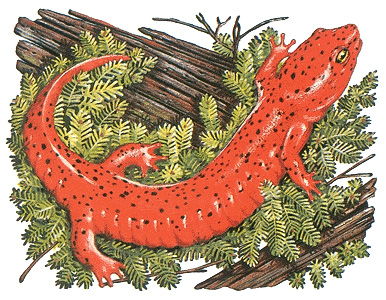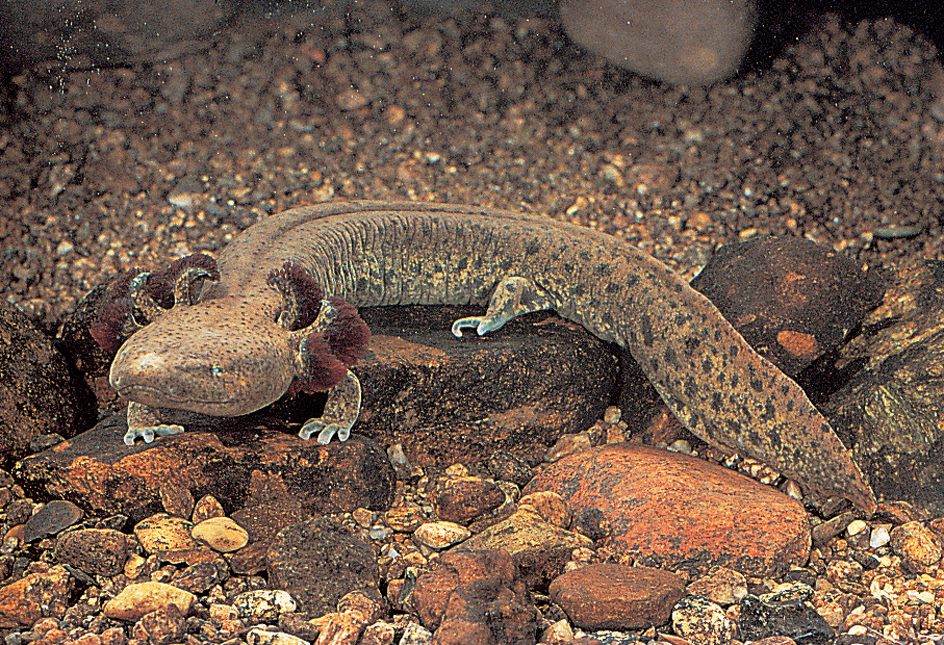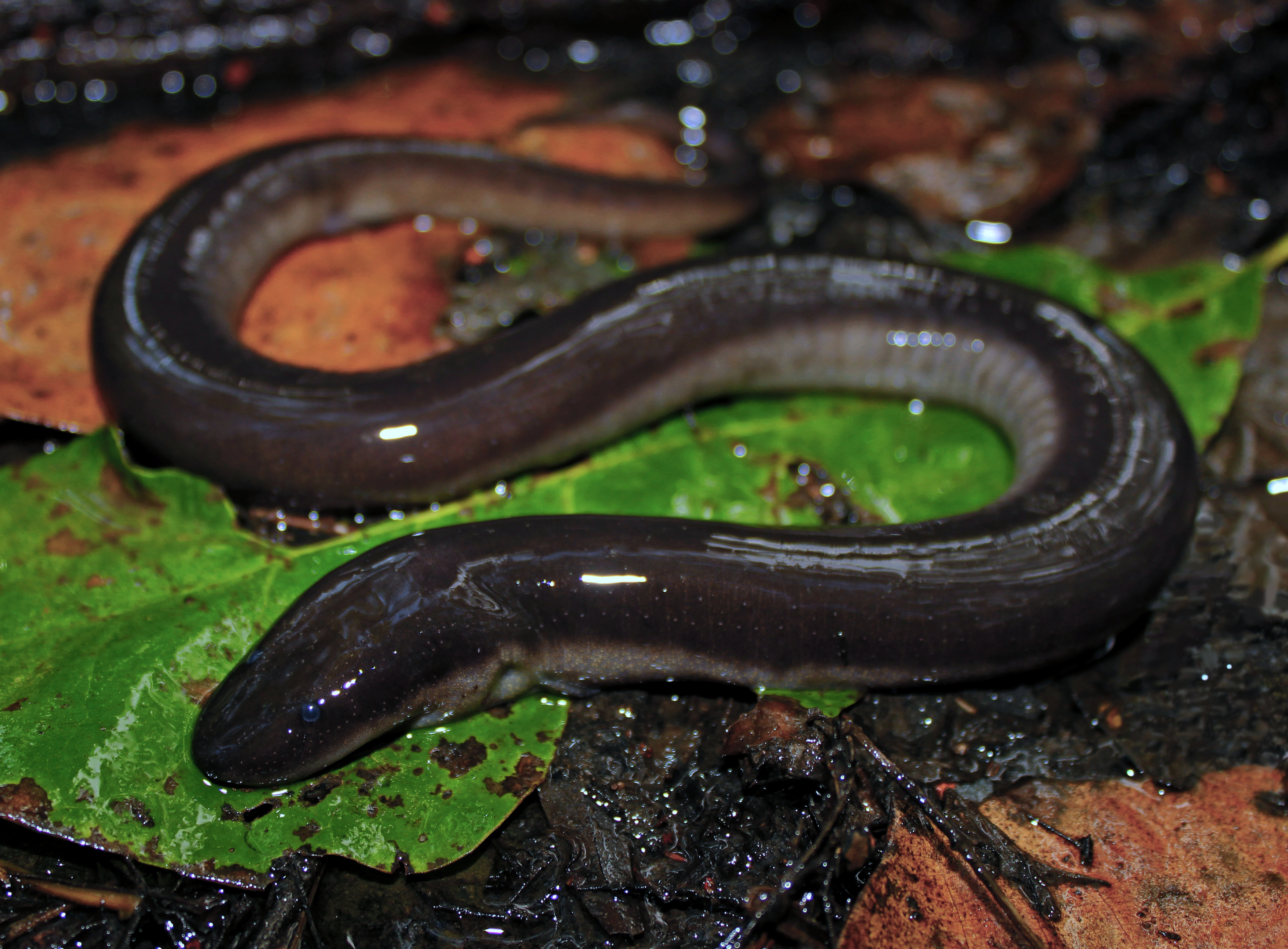Salamander is a timid, harmless animal that looks like a lizard but is related to frogs. It is a type of amphibian. Salamanders live on all the continents except Antarctica and Australia. They are most common in Asia, Europe, and North America.

There are hundreds of species of salamanders. The species include hellbenders; mudpuppies; newts; and marbled, red-backed, spotted, and tiger salamanders. Most salamanders are only a few inches or centimeters long, but the Chinese giant salamander can grow up to about 6 feet (1.8 meters) long.
Most salamanders mate and lay their eggs in water, but otherwise live on land. They tend to dwell in cool, dark, moist places, such as rotten logs. However, mudpuppies and some other species spend their whole lives in water, and a few species never enter water at all.
The body of a salamander.
Most salamanders have moist, dark skin and are difficult to see in their natural environment. A number of species, however, are brightly colored. Some of these species secrete a milky fluid through the skin when handled roughly or when in danger. This fluid is poisonous to some animals.
Salamanders have a long tail that is used for swimming. Most species have four legs, but a few that live in water lack hind legs. Salamanders possess a strong sense of smell, and most have a long, sticky tongue for catching food. They eat mainly worms and insects.

The life of a salamander.
Like all amphibians, salamanders are cold-blooded—that is, their body temperature remains close to that of their environment. During cold periods, they burrow into soil or lie on the bottom of a pond, where they are sluggish and generally inactive. Species that live in mountain streams and springs may remain active throughout the year.
Many salamanders perform an elaborate courtship dance before mating. After the dance, male salamanders produce a spermatophore, or jellylike packet of sperm. The female picks up the spermatophore, which internally fertilizes her eggs. Female salamanders lay eggs in water or on moist ground. Eggs laid in water usually hatch in a few weeks, but those laid on land may require several months to complete their development. In many species, the female stays with her eggs until they hatch. During this period of care, called brooding, the female does not eat.
Newly hatched salamanders are called larvae. They resemble frog tadpoles but have feathery gills at the sides of their heads. The larvae change into adults through a gradual process called metamorphosis. This process lasts from 42 days to 5 years, depending on the species. During this period, certain features of the larvae may disappear. For example, most salamanders lose the gills they have as larvae just before they change into adults. Many salamanders breathe with lungs as adults. But the largest salamander family is lungless, and adults breathe primarily through their skin.


